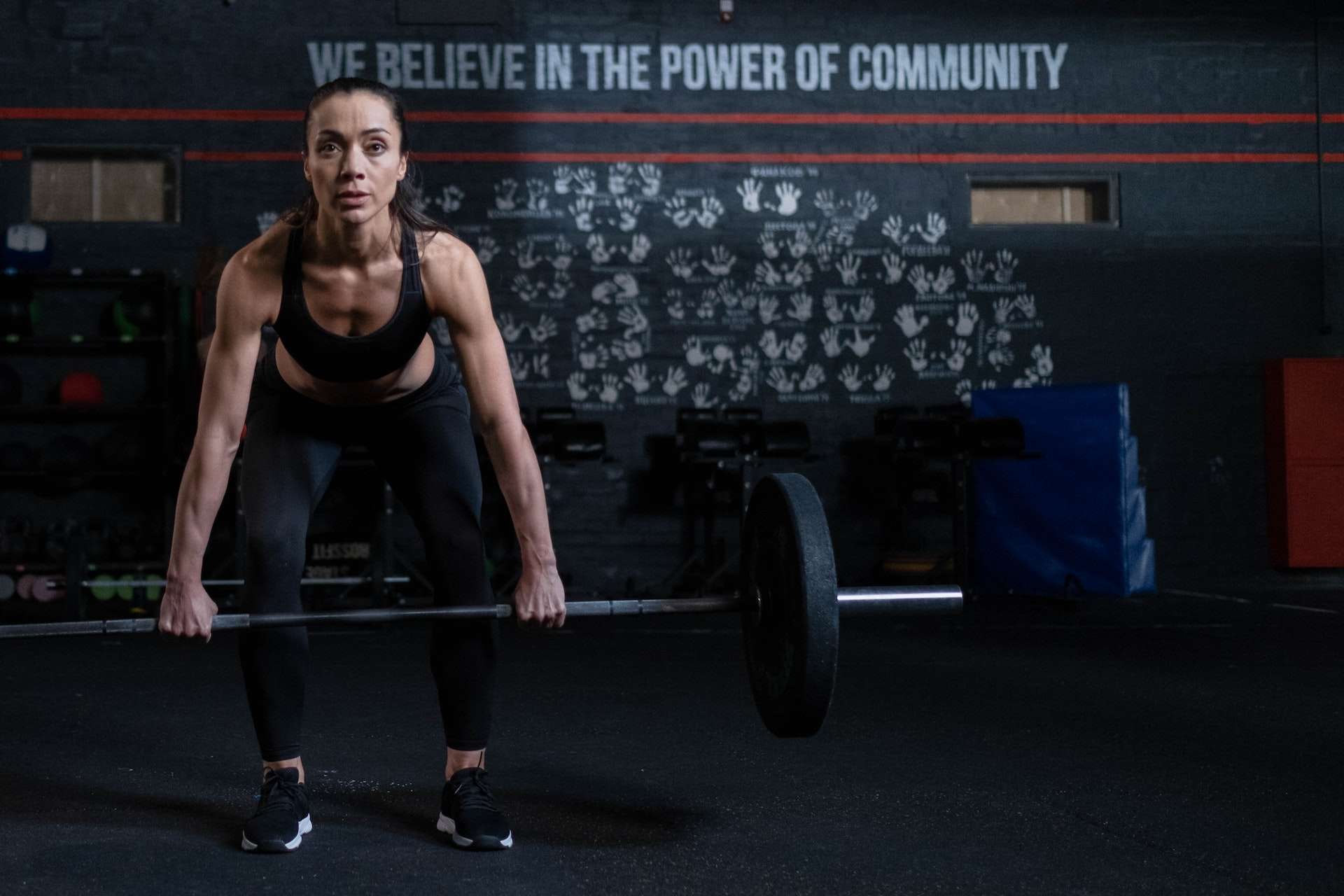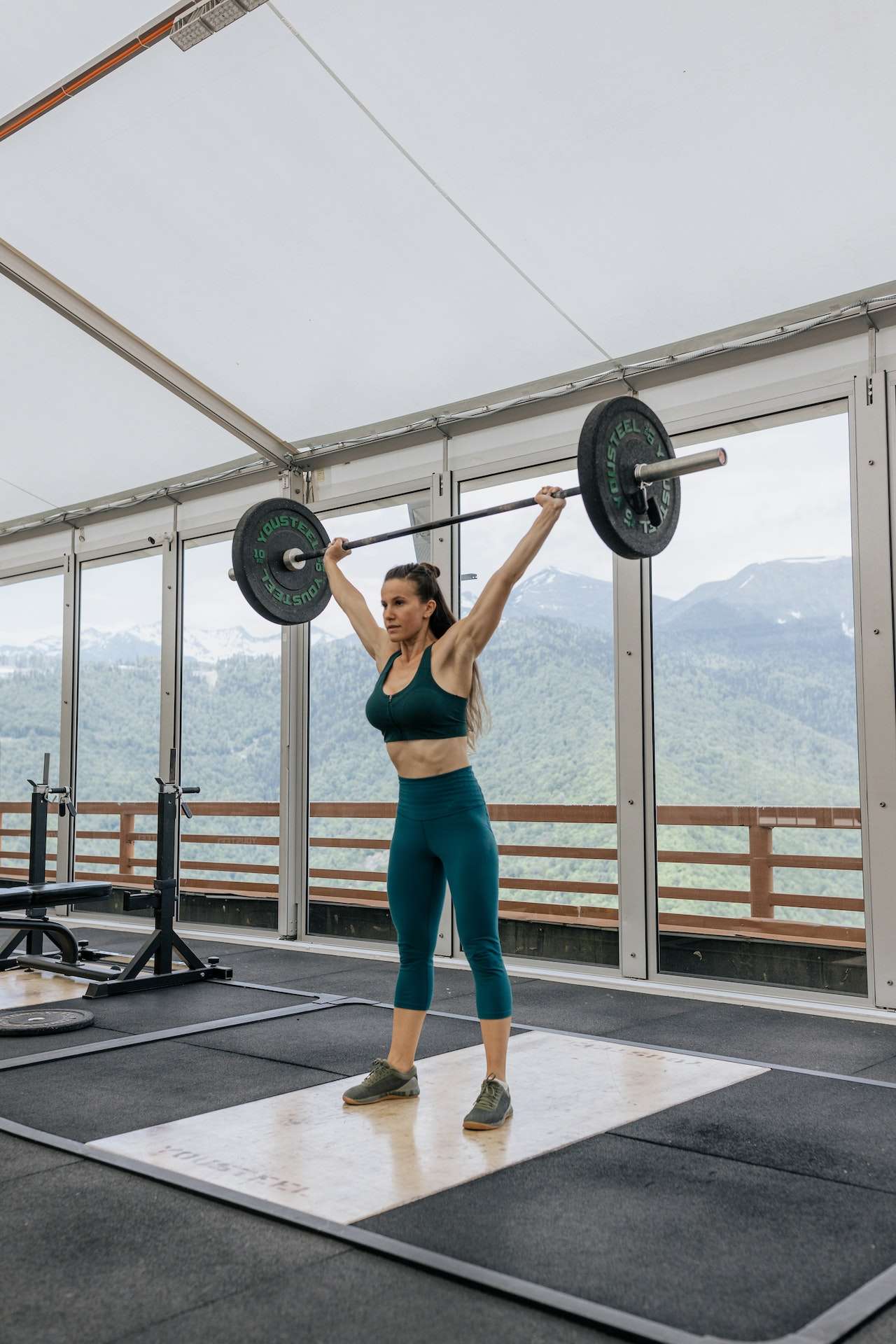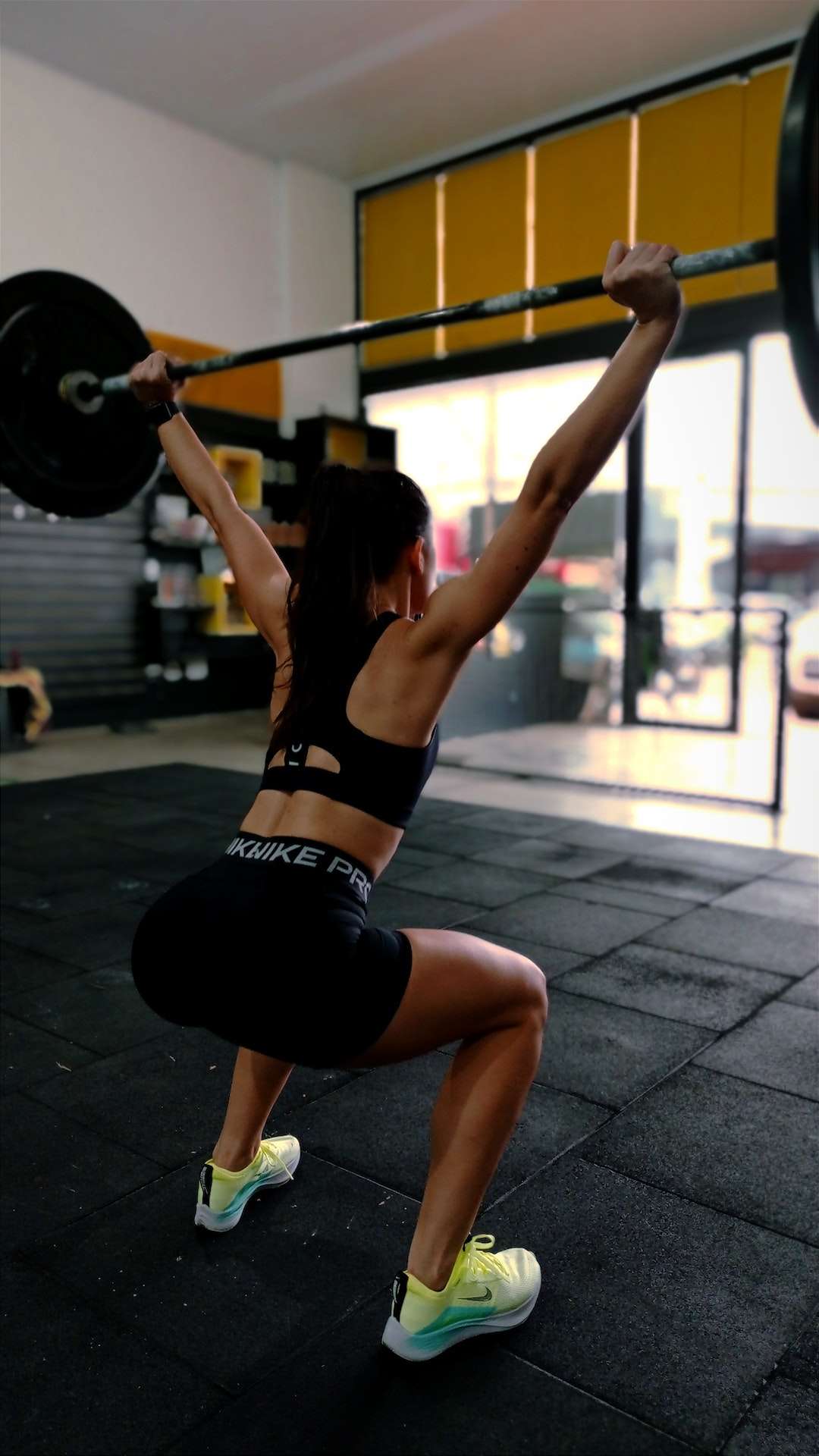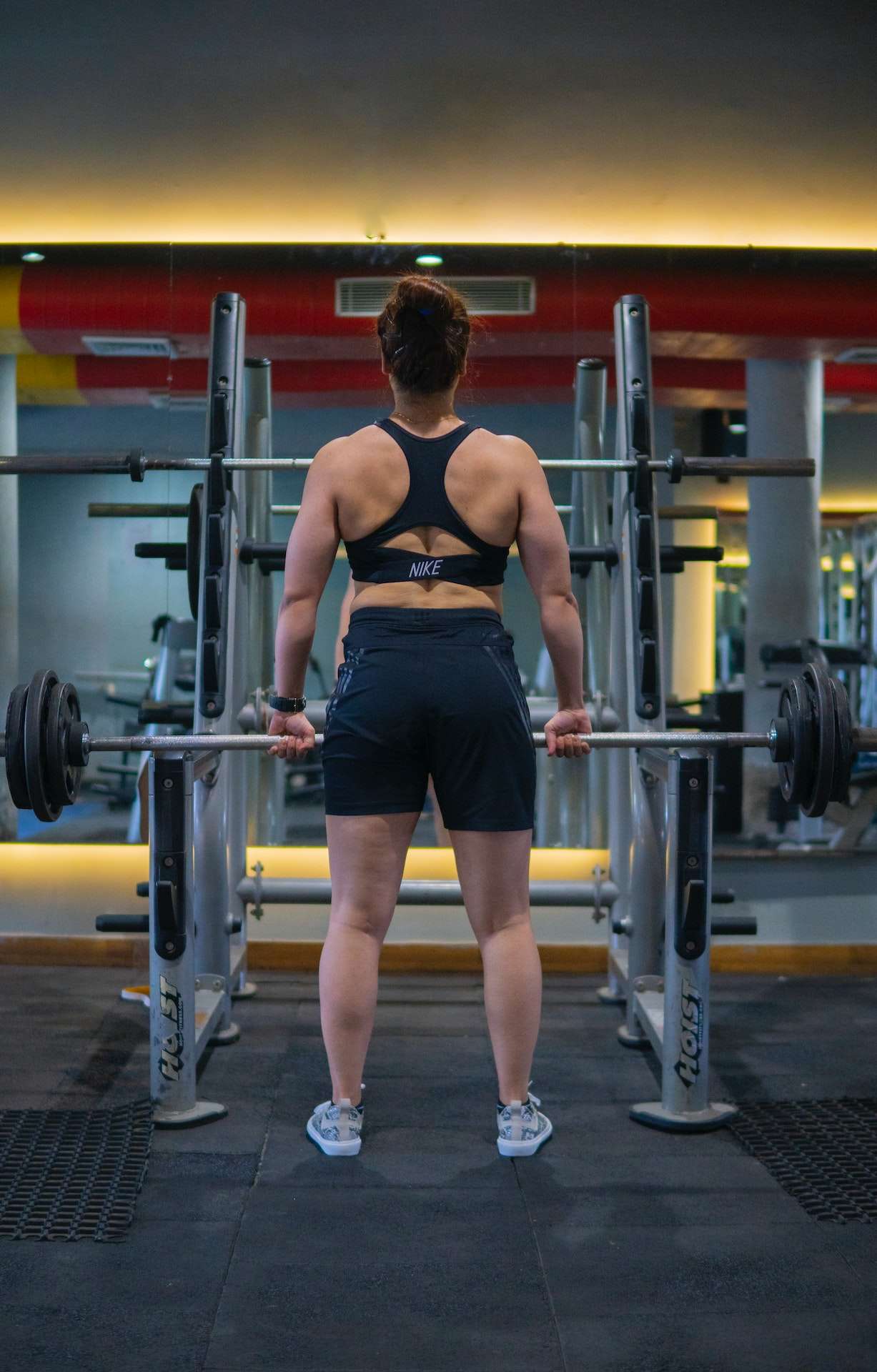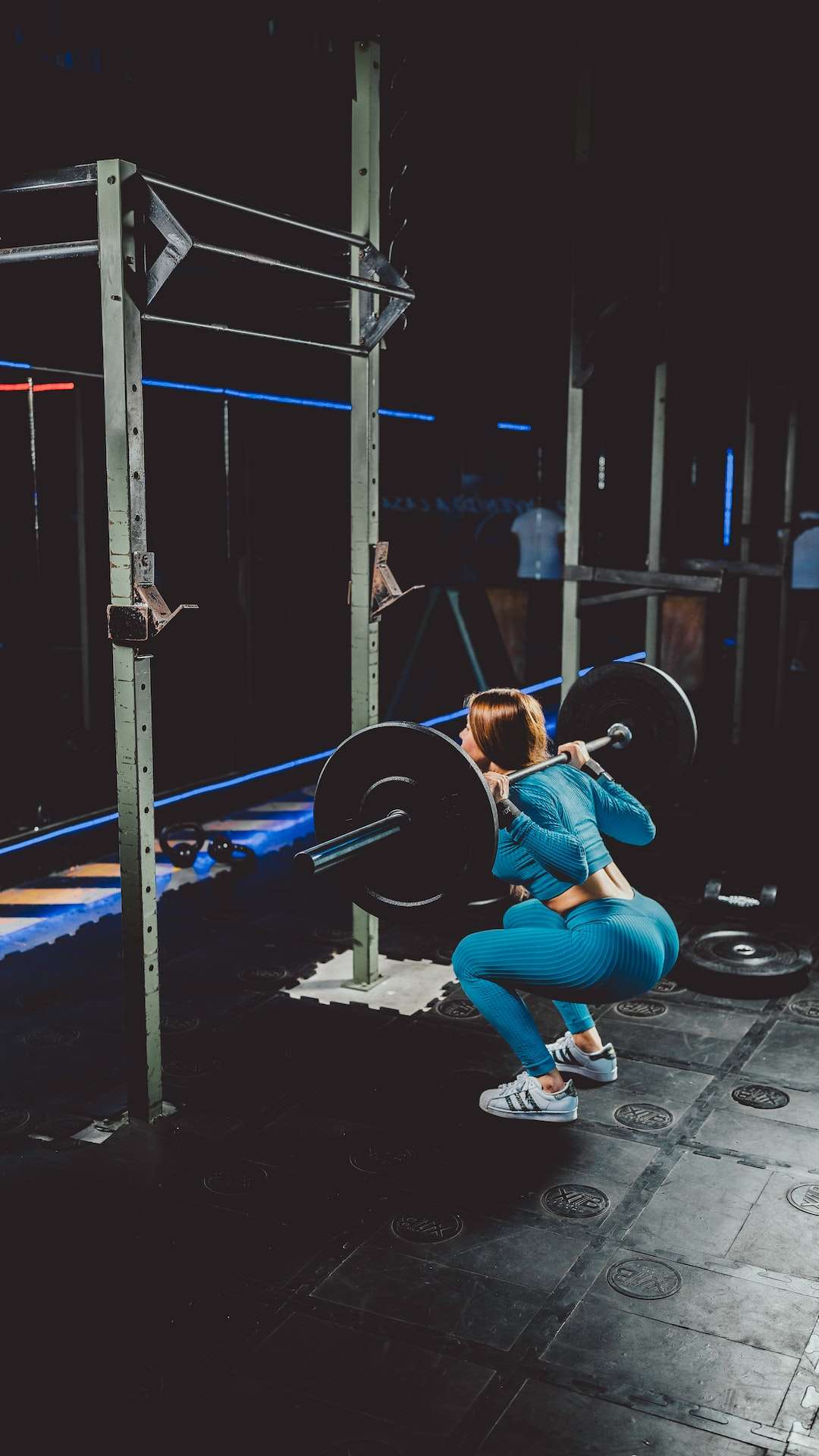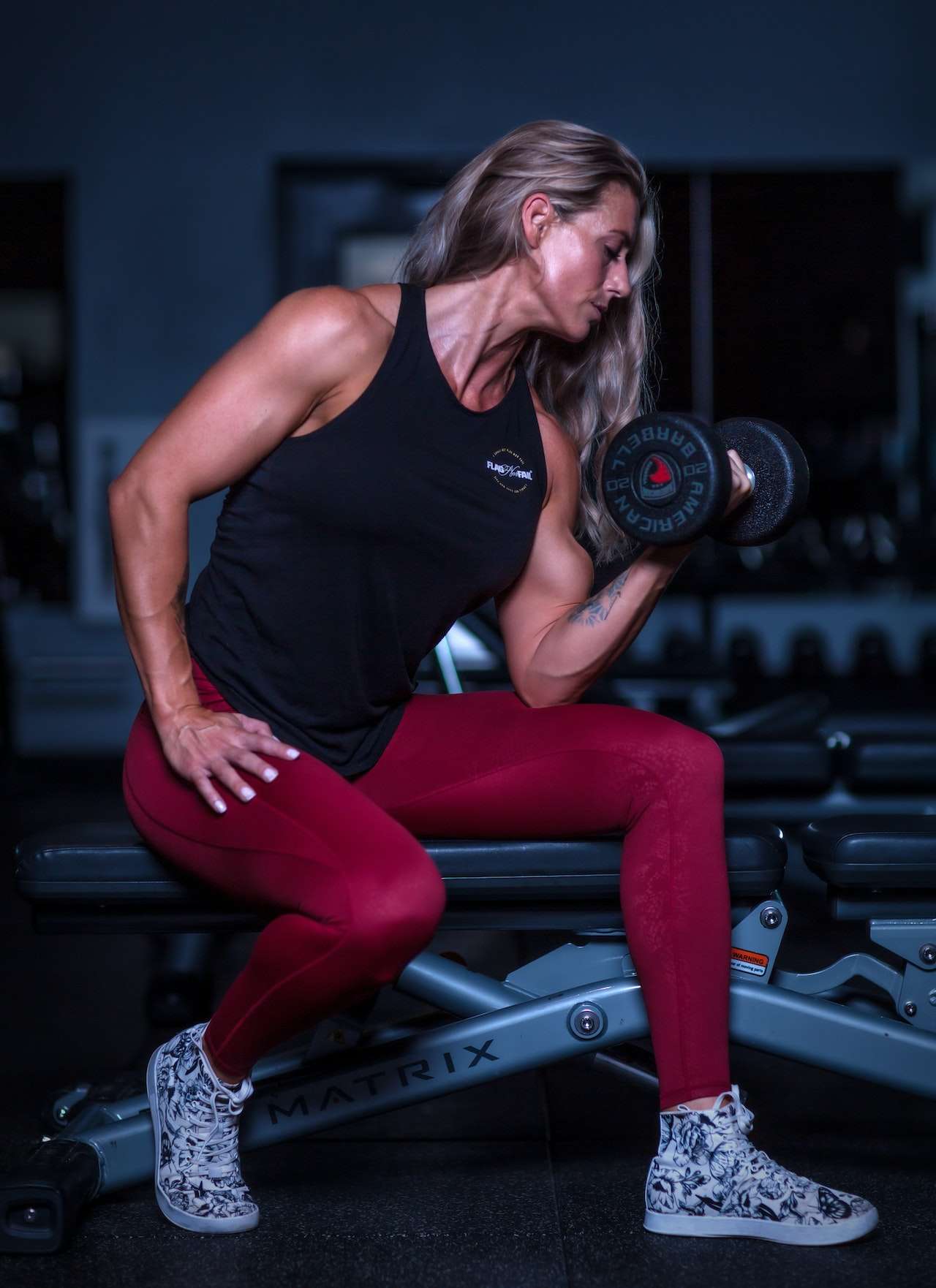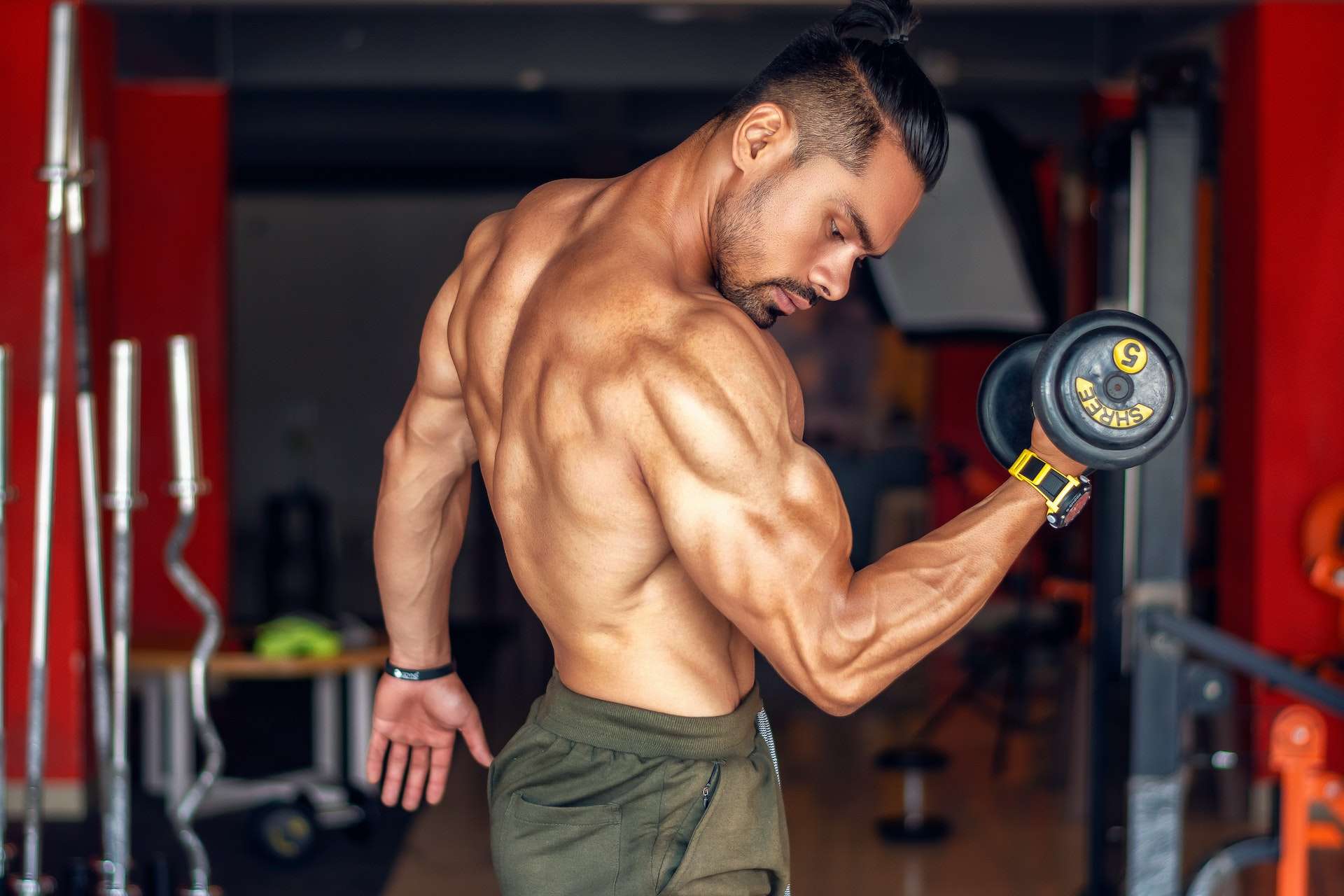|
Have you ever wondered what it takes to become a bodybuilder? How do the training and diet differ for different types of bodybuilding? What sets one kind of bodybuilding apart from the other? How can you get the most out of your training and diet to reach your goals? These are all questions that many aspiring bodybuilders have when they start their journey. The answer to these questions is complex; it requires an in-depth understanding of the different types of bodybuilding and what each requires regarding training and diet. From powerlifting to physique competition, there is no one-size-fits-all approach to achieving success in this sport. So, how does one decide which type of bodybuilding best fits them? From the basics of weightlifting to more advanced techniques such as nutrition manipulation, this article will provide an overview of the various aspects of developing a successful bodybuilding program. With insights from experts in the field, we’ll explore how training and diet differ between different types of bodybuilding and how you can use that knowledge to design an effective program that works for you. Are you ready to take your fitness journey to the next level and achieve your goals? Let’s dive right in!
Table of Contents
show
Training For Bulking Increasing Muscle MassBodybuilding is a sport that requires an intense dedication to training and diet. It is like a game of chess, where each move has the potential to create or destroy your masterpiece. Metaphorically speaking, it is like sculpting a beautiful statue from granite – every tiny detail matters. The purpose of bulking is to increase muscle mass. Strength training and bodybuilding are two different forms of exercise, but they share a common goal: to build muscle mass. A powerlifting and bodybuilding hybrid workout plan for strength and size can benefit many athletes as it combines the best of both worlds. While powerlifting focuses on heavy weights in low reps, bodybuilding focuses on moderate weights in higher reps to stimulate muscle growth with minimal damage to the joints. Creatine is also essential when bulking, as it helps with muscular energy production and increases the weight you can lift during workouts. Deadlifts are another vital exercise for bulking, as they challenge multiple muscles at once and can help you build overall strength quickly.
Creatine phosphate is also beneficial for increasing the weight you can lift during workouts. Weight lifting belts can also help provide extra support when lifting heavier weights during bulking workouts. The purpose of the muscular system is to produce force so that we can move our bodies through space – whether running a marathon or doing squats in the gym – and this force must be trained regularly if we want our muscles to grow bigger and stronger over time. Squats are one of the best exercises for building strength, size, and power in your legs while simultaneously targeting your core muscles. They should be included in any good bulking program as they target multiple muscle groups at once while helping you lift heavier loads in less time than other exercises require – making them perfect for those looking to bulk up quickly! Training For Cutting and Reducing Body FatTraining for cutting is an essential part of bodybuilding for aesthetics. It has the purpose of reducing body fat while maintaining muscle mass. Coincidentally, I am currently using this approach to achieve my physique goals. Here are the three main components of training for cutting: 1) Adjust your training approach: The aim is to maximize strength and muscle retention while losing body fat. This means incorporating compound movements like squats and deadlifts with isolation exercises like bicep curls and triceps extensions. You should also focus on increasing the time under tension during each set of activities and perform fewer reps to fatigue the muscles more quickly. 2) Follow a high protein diet: Protein is key in maintaining muscle mass during cutting phases. Aim for 1-2 grams of protein per pound of body weight per day, and remember to get enough healthy fats from food sources such as avocados, nuts, and olive oil. Carbohydrates should come primarily from vegetables, fruits, whole grains, and legumes. 3) Incorporate cardio into your routine: Cardio is essential in cutting phases because it helps burn calories while preserving muscle mass. High-intensity interval training (HIIT) is efficient because it boosts your metabolism while keeping your workouts short yet intense. The importance of recovery cannot be underestimated when it comes to cutting training; always ensure you get enough rest between sets and sessions to allow your muscles to recover properly to maintain optimal performance levels throughout the process. Genetics also influence how successful someone will be at bodybuilding for aesthetics. Depending on their genetic makeup, some people may find it easier to build lean muscle or burn off body fat. Overall, understanding the components associated with training for cutting is essential if you want to achieve aesthetic goals through bodybuilding. Once you have these elements down pat, you’re ready to move on to the next step: training for endurance building endurance! Training For Endurance Building EnduranceTraining for endurance building differs from training for fat loss or strength and power. It would help to focus on gaining muscle mass to improve your overall endurance. The number one factor in achieving this goal is the importance of recovery. Your body needs time to recover after training sessions, and if you don’t give it that rest, you may end up overtraining and losing any progress you’ve made. Genetics also influences how quickly you can build endurance and muscle mass, so consider that when setting your goals. Rest and recovery are as important for athletes as proper nutrition and muscle-building. When training for bodybuilding vs. powerlifting, focus on cardio exercises like running, swimming, or cycling because these will help build the muscles necessary for endurance activities.
Additionally, nutrition for aesthetics plays a big part in building muscle; ensure enough protein from lean sources like chicken breast or salmon, plus carbohydrates from whole grains like quinoa or brown rice. The role of hormones also affects muscle hypertrophy – testosterone, insulin-like growth factor 1 (IGF-1), and human growth hormone (HGH) all play an essential role in developing larger muscles that result in improved performance during endurance activities. Cardio vs. strength training is another topic when discussing muscular building endurance; At the same time, both have their benefits; it’s essential to find a balance between the two so you don’t overdo either. The Strength Guys program is a great way to build strength while still focusing on improving overall endurance levels with appropriate rest periods throughout the program. Training For Powerlifting Building Strength And PowerIf you thought that bodybuilding was all about aesthetics, think again! An entire world of powerlifting and strength training can benefit your health and physique. While it might seem ironic initially, those looking to build strength and power through bodybuilding must take a different approach than those seeking the sculpted look. The primary purpose of bodybuilding for strength is to build muscle mass – not just visible muscles, but dense muscle fibers capable of producing force. As such, the training approach for this bodybuilding type focuses on heavy compound exercises requiring multiple joints and muscles to work together. The weight should be increased as much as possible without compromising form or risking injury. Additionally, nutritional requirements must be met to fuel these gains; a calorie surplus and high protein intake are essential for muscle growth. Cardio can also play a role in powerlifting by helping with muscular endurance and recovery between sets. Recovery is one of the most important aspects of any program since it’s when the muscles heal and grow stronger. Genetics can also impact how quickly someone can increase their strength – some people have better natural abilities when gaining muscle mass. However, there’s still plenty that everyone can do, regardless of their genetics, if they stay consistent with their diet and training program. Finally, remember the mental aspect, too; strength training requires a different outlook than aesthetic-focused bodybuilding, where you focus more on dieting and weight loss over pure raw power! Training For Bodybuilding CompetitionsWhen it comes to bodybuilding competitions, the goal is different from powerlifting. The focus is on aesthetics and symmetry rather than strength and power. This requires a unique approach to training and diet that differs significantly from what you’d do for powerlifting. The training approach for bodybuilding for strength focuses on muscle isolation exercises that target specific muscle groups with high repetition sets. This helps build up size and definition and improves the appearance of muscles. Other important elements include rest and recovery, essential for optimal performance in strength and aesthetics. Genetics play an important role in bodybuilding success, as some athletes may have an advantage over others due to their genetic makeup. Nutrition also plays an important role when it comes to bodybuilding competitions. A high-calorie diet with adequate protein is essential to support muscle growth and development. Macronutrient timing is also crucial; the proper nutrients at the right time can help maximize gains while minimizing losses due to fatigue or injury.
Additionally, adequate hydration is necessary for successful bodybuilding competition performance, as dehydration can lead to decreased performance and increased risk of injury or illness. Recovery is also significant in bodybuilding; taking time off between workouts ensures muscles are given enough time to repair and rebuild themselves properly, resulting in improved performance during competition season. Furthermore, rest days should be included regularly in any bodybuilder’s schedule; rest days allow the body time to recover from intense exercise sessions while providing psychological benefits such as improved moods and better concentration levels while competing. Ultimately, the training approach for bodybuilding differs significantly from that used in powerlifting due to its focus on aesthetics rather than strength alone; nutrition plays a key role in helping athletes reach their goals, while recovery is essential for maintaining peak performance throughout the competition season. Diet For Bulking High-Calorie And High-ProteinThe diet for bulking high-calorie and high-protein is the foundation all bodybuilders must build upon to achieve their desired aesthetics. Athletes must understand the basics of the bodybuilding diet to prepare for a successful competition journey. Here are some critical aspects of strength nutrition for bodybuilding: 1. Bodybuilding aesthetics: Building muscle mass requires an intense training program and a balanced nutritional plan. The bodybuilding diet should have adequate protein, carbohydrates, and fats, emphasizing lean proteins and healthy fats. 2. The muscle and strength pyramid nutrition: This pyramid provides a recommended range of macronutrients (carbohydrates, proteins, and fats) that support muscle growth while allowing room for individual preference. It’s important to note that the amount of calories needed to support the development of one pound of muscle varies depending on personal goals. 3. The protein requirement for athletes: Protein is essential for muscle building and maintenance, as it helps build and repair muscles after workouts. A good rule of thumb is to consume around 1 gram of protein per pound of body weight daily to maximize gains and keep your metabolism running at peak efficiency. 4. The benefits of bodybuilding: Strength training can help improve overall health by increasing bone density, reducing injury risk, improving posture, improving balance and coordination, and reducing stress levels. It can also help boost energy levels throughout the day and enhance mental clarity. 5. The only bodybuilding supplements you need: While many supplements are available today, it’s important to note that most are unnecessary if you follow a balanced diet. That being said, some essential supplements, such as whey protein powder or creatine monohydrate, can be beneficial in helping optimize performance during workouts or aiding recovery afterward. It’s necessary to ensure that your nutritional plan provides enough energy to support your desired aesthetic goals without overloading your system with excess calories or macronutrients it doesn’t need. You will reach your ideal physique faster than ever by understanding how many kcal you need daily based on your current fitness level and desired results combined with a comprehensive training program. You will reach your ideal physique faster than ever! With this knowledge, you can optimize your diet to work best for you while still providing all the nutrients needed for maximal progress toward achieving those bodybuilding aesthetics! Diet For Cutting Low-Calorie And High-ProteinCutting is a crucial part of bodybuilding for physique-focused athletes. It requires an intense and strategic diet low in calories but high in protein to help achieve the desired aesthetic. This is where the role of cardio in bodybuilding for strength comes into play. Cardio helps to burn fat and build lean muscle, providing an essential part of the cutting. The Bodybuilding Bible explains how athletic fitness training increases metabolism and supports weight loss. Strength training vs. bodybuilding physique focuses on building muscle rather than pure strength, so finding the right balance between aerobic and anaerobic exercise is essential. Training for aesthetics recommends a simple and effective plan focusing on lifting heavy weights while increasing frequency for those seeking to gain mass with a bodybuilding aesthetics program.
With this strategy, you can develop muscle groups quickly while maintaining proper form. The recommended muscle fitness training method combines compound lifts such as deadlifts, squats, and bench presses with isolation exercises such as bicep curls, triceps extensions, or lateral raises to target specific muscles. Nutritional requirements for building strength are also key when fat loss is the goal: eating enough protein but not too many calories is essential for achieving that defined look. Eating right for cutting isn’t just about reducing calories – it’s about finding the perfect mix of macronutrients to achieve your goals without sacrificing performance or health. Diet For Endurance High-Carbohydrate And Moderate-ProteinRegarding bodybuilding for aesthetics versus strength, the mental aspect of training is just as important as the physical. Aesthetic bodybuilding focuses on improving muscle size and shape, while strength athletes focus on increasing muscular power. That being said, the purpose of CrossFit and weight belts differ; while CrossFit is an all-encompassing workout program, weight belts protect your back when lifting heavy weights. The recommended training method for muscle fitness is “training for strength and hypertrophy” – a combination of exercises that target performance and muscle growth. Programs like The Strength Guys Free Program provide evidence-based approaches to building muscle and increasing strength. Additionally, the protein requirement for athletes is more than the RDA since it helps with recovery post-workout, so it’s essential to ensure you’re getting enough protein in your diet. For endurance bodybuilding, high-carbohydrate but moderate-protein diets are ideal. Carbohydrates provide energy for prolonged endurance training sessions, while proteins help build and repair muscles after strenuous workouts. As such, this diet should be balanced with adequate macronutrients to ensure optimal performance during exercise. Diet For Powerlifting High-Calorie And High-ProteinPowerlifting and bodybuilding are two sports that require different diet approaches. The focus is on building strength through high-calorie and high-protein foods for powerlifting. This means eating many nutrient-dense foods such as lean meats, dairy products, legumes, nuts, and seeds. The essential nutrient for building strength is protein, which helps build muscle mass and provides energy for anaerobic activities. A pound of muscle requires about 1 gram of protein daily to support growth. Including carbohydrates in your diet is essential to provide energy for intense workouts.
Bodybuilding aesthetics require a different approach than powerlifting regarding diet and nutrition. Natural bodybuilders have different needs regarding meal planning due to their genetic makeup. They should focus on eating nutrient-rich foods, lean proteins such as fish and poultry, complex carbohydrates, healthy fats, and plenty of fruits and vegetables. Additionally, they need more calories than powerlifters to support the growth of muscle tissue as well as enough B vitamins, which increase proportionally with energy expenditure. Cardio is also vital for bodybuilding aesthetics as it helps burn fat while preserving muscle mass. Finally, recovery is essential after a workout or competition; this includes proper rest and hydration plus stretching or foam rolling to reduce DOMS (delayed onset muscle soreness). With the right diet plan tailored to your individual needs, you can become successful in your sport, whether you’re into powerlifting or bodybuilding aesthetics. Meal Planning For Bodybuilding Sample Meal PlansMeal planning for bodybuilding is crucial to achieving the desired results from your strength training program. An excellent example is IFBB Pro and 4-time Mr. Olympia Phil Heath, who follows an incredibly disciplined meal plan to maintain his lean, muscular physique. Proper nutrition for strength training involves having nutrient-dense meals throughout the day, each tailored to the individual’s specific goals. It would help to focus on what types of food you eat and when and how much to consume to maximize your bodybuilding efforts. In addition to proper nutrition, certain supplements can be used as part of a bodybuilding routine. These include protein powders, creatine, BCAAs, and pre-workouts. These supplements can help provide extra energy and enhance muscle growth while increasing recovery time after workouts. It is important to note that not all supplements are necessary for bodybuilding success – the only ones you need are those that supplement a healthy diet and exercise program. Cardio is another crucial aspect to consider when planning out a bodybuilding regimen. Cardio, after lifting, helps burn fat and boost metabolism while allowing maximum muscle growth when done correctly. Finding the right balance between cardio and weight training is essential to maximize your results without overtraining or risking injury by doing too much of one type of exercise over the other. Additionally, rest days are necessary for muscles to recover post-workout, one of the most critical factors in achieving optimal gains from bodybuilding aesthetics like IFBB Pro Phil Heath. Intermittent fasting has become increasingly popular among those looking to achieve their ideal physique through nutrition – something that should be further researched before implementing into any meal plan regimen due to its potential health benefits and associated risks depending on an individual’s medical history and lifestyle habits. Supplements For Bodybuilding Pros And ConsRegarding bodybuilding, supplements can be critical in achieving the desired physical results. With proper nutrition and exercise, supplements can benefit all athletes, regardless of their individual goals. However, some pros and cons come with taking bodybuilding supplements that should be considered before beginning any regimen. Here are four things to consider when deciding if supplements are right for you: 1) Theragun for Bodybuilding: Using a theragun as part of your recovery routine dramatically reduces muscle soreness after workouts. The vibrations from the gun help stimulate blood flow and reduce muscle inflammation. This can lead to improved performance during workouts and faster recovery times between them. 2) The Importance of Recovery Days: Taking days off for active recovery is essential to any bodybuilding program. By taking one or two days off from the gym each week and engaging in low-impact activities such as yoga or swimming, you’re giving your body time to rest and heal, which will help prevent injury and fatigue over time.
3) Genetics in Bodybuilding: Genetics play an important role in determining how successful one may be at bodybuilding. Some people have a genetic predisposition towards building muscle, while others may struggle more than others despite following the same workout plan. Understanding how genetics affects your body can help you determine what program best suits your needs when building muscle mass. 4) Best Bodybuilding Program for Aesthetics: One of the essential factors when achieving aesthetic results through bodybuilding is finding a program that works best for you. Everyone responds differently to different exercises, so it’s critical to find out what works best for your body type before committing long-term to any program. Taking supplements is a personal decision, but understanding their pros and cons can help you decide whether or not they suit you and your fitness goals. It’s also important to remember that proper diet, exercise, rest, active recovery, and genetics all play vital roles in achieving success in bodybuilding, so consider these! Conclusion:Bodybuilding is a highly individualized sport that requires dedication and hard work. Each type of bodybuilding has its unique training and diet requirements. Bulking aims to increase muscle mass, while cutting focuses on reducing body fat. Endurance athletes must follow a high-carbohydrate and moderate-protein diet, while powerlifters should focus on high-calorie and high-protein diets. Meal plans should be tailored to each individual’s needs, and supplements can be beneficial but should only be taken cautiously. All types of bodybuilding require discipline and consistency to achieve success. As the old saying goes: “If you fail to plan, you plan to fail” – this rings true for any bodybuilding journey. So if you are serious about reaching your goals as a bodybuilder, carefully plan out your training routine, diet plan, and supplement intake. By taking control of your bodybuilding journey in such a way, you will be able to reach greater heights than ever before – unlocking your true potential as an athlete and unlocking the key to success. |
